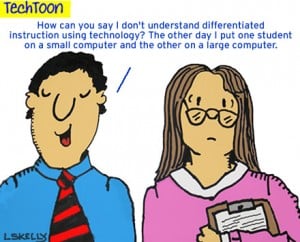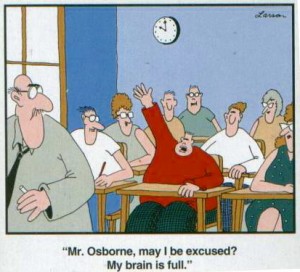 It is of no use to keep going the way we are if we don’t constantly reflect and review what we are doing in and out of the classroom. Students no longer accept that we as teachers know everything and that our sole purpose is to feed them the information so they can regurgitate it back to us in tests and exams. Our journey in investigating the differentiated curriculum is an introduction into a different way of thinking about knowledge and skills. Many of us already apply some of the strategies while others, well we are happy to continue giving them the same worksheets, the same tests and hoping for the best. We are very busy people after all.
It is of no use to keep going the way we are if we don’t constantly reflect and review what we are doing in and out of the classroom. Students no longer accept that we as teachers know everything and that our sole purpose is to feed them the information so they can regurgitate it back to us in tests and exams. Our journey in investigating the differentiated curriculum is an introduction into a different way of thinking about knowledge and skills. Many of us already apply some of the strategies while others, well we are happy to continue giving them the same worksheets, the same tests and hoping for the best. We are very busy people after all.
However, we are also out to make a difference, or at least I hope we are. So if this is the main objective then we need to teach them content, yes, but more importantly we MUST teach them what to do with it once they’ve got it.
Let’s reflect for a moment:
- The students we have in front of us today are the ones who will be looking after us tomorrow.
- The students we teach today will be the parents of future children who will change forever what we know and do.
- The student who today may be difficult could be a future Einstein or Rosalind Franklin or Shakespeare or Martin Luther King Jr. or even the next Dr. Who –and by this I don’t mean the actor who will play him, I mean the scientist who will invent something extraordinary like the 15 year old who has developed a test to diagnose pancreatic cancer.
Too much, well, they had to be in somebody’s class didn’t they?
Anyhow my point is that it’s worth the extra effort to ensure that all students are engaged and that they develop a love of learning. The only way this is going to happen is if you and they believe they can. One of the ways we can help this along is to meet them at their level, regardless of where that might be, and ensure they move along in value added learning.
One way to do this is to differentiate our classes. Differentiation “consists of the efforts of teachers to respond to variance among learners in the classroom. Whenever a teacher reaches out to an individual or small group to vary his or her teaching in order to create the best learning experience possible, that teacher is differentiating instruction.” (Tomlinson)
Call back next week for Part 2: The 3 Ps in Differentiation
Thanks for reading 🙂



